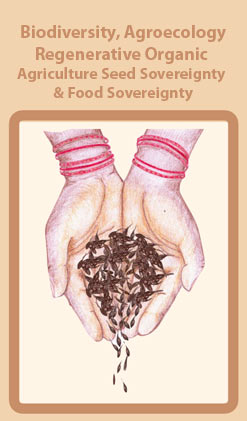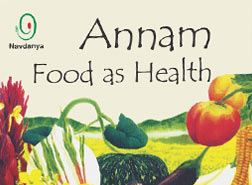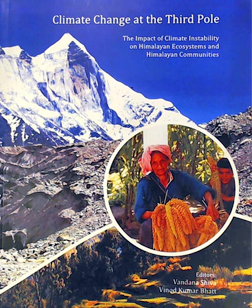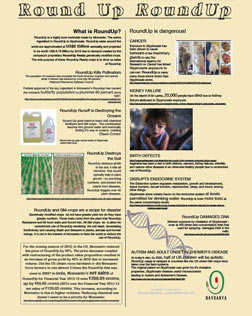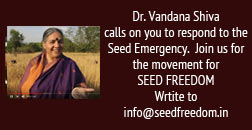
From Assam, Bihar and Uttar Pradesh, where floods displaced 41 million people and killed nearly 500, to Houston and Mumbai, where floods brought life to a standstill it is becoming increasingly evident that we are not living within the ecological limits and boundaries of our planet and are facing the consequences of violating the laws of Earth.
When we disrupt the Earth’s self-regulating climate systems, we receive climate chaos and climate uncertainty, not predictable climate change, which we can “geo-engineer” or “genetically engineer” our way out of.
Living systems evolve, adapt and regenerate; they are not engineered.
The domination of the engineering paradigm began with the fossil fuel age, the age of industrialism and mechanism and the doctrine that all natural phenomena, including life and thought, can be explained with reference to mechanical or chemical processes.
Over the past 200 years, a small part of humanity has trashed the planet — designing an economy fuelled by coal, oil and gas and a knowledge system based on a mechanistic, reductionist and materialistic paradigm.
The pollution of atmosphere has disrupted the climate systems and climate balance. The destruction of habitat and spread of monocultures have contributed to what scientists are calling “the sixth extinction” — the disappearance of biodiversity at 1,000 times the normal rate.
We are eating, drinking and breathing oil.
The extraction of fossil fuels (dead carbon) from the earth, burning it and putting uncontrollable emissions into the atmosphere leads to the rupture of the carbon cycle and, through it a destabilisation of climate systems.
Steve McKevitt and Tony Ryan in Project Sunshine point out that all the coal, petroleum and natural gas we are burning and extracting was formed over 600 million years. We are burning up 20 million years of nature’s work annually.
The carbon cycle is broken and it we who broke the cycle.
Dependence on dead fossil carbon is also responsible for creating scarcity in living carbon, which reduces availability of food for humans and for the soil organisms. This scarcity translates into malnutrition and hunger on the one hand, and desertification of the soil on the other. Chemical agriculture intensifies chemical and capital inputs, while reducing the biodiversity, biomass and nutrition that the seed, the soil, the sun can produce.
When we disrupt the Earth’s self-regulating climate systems, we receive climate chaos and climate uncertainty, not predictable climate change, which we can “geo-engineer” or “genetically engineer” our way out of.
Living systems evolve, adapt and regenerate; they are not engineered.
The domination of the engineering paradigm began with the fossil fuel age, the age of industrialism and mechanism and the doctrine that all natural phenomena, including life and thought, can be explained with reference to mechanical or chemical processes.
Over the past 200 years, a small part of humanity has trashed the planet — designing an economy fuelled by coal, oil and gas and a knowledge system based on a mechanistic, reductionist and materialistic paradigm.
The pollution of atmosphere has disrupted the climate systems and climate balance. The destruction of habitat and spread of monocultures have contributed to what scientists are calling “the sixth extinction” — the disappearance of biodiversity at 1,000 times the normal rate.
We are eating, drinking and breathing oil.
The extraction of fossil fuels (dead carbon) from the earth, burning it and putting uncontrollable emissions into the atmosphere leads to the rupture of the carbon cycle and, through it a destabilisation of climate systems.
Steve McKevitt and Tony Ryan in Project Sunshine point out that all the coal, petroleum and natural gas we are burning and extracting was formed over 600 million years. We are burning up 20 million years of nature’s work annually.
The carbon cycle is broken and it we who broke the cycle.
Dependence on dead fossil carbon is also responsible for creating scarcity in living carbon, which reduces availability of food for humans and for the soil organisms. This scarcity translates into malnutrition and hunger on the one hand, and desertification of the soil on the other. Chemical agriculture intensifies chemical and capital inputs, while reducing the biodiversity, biomass and nutrition that the seed, the soil, the sun can produce.


